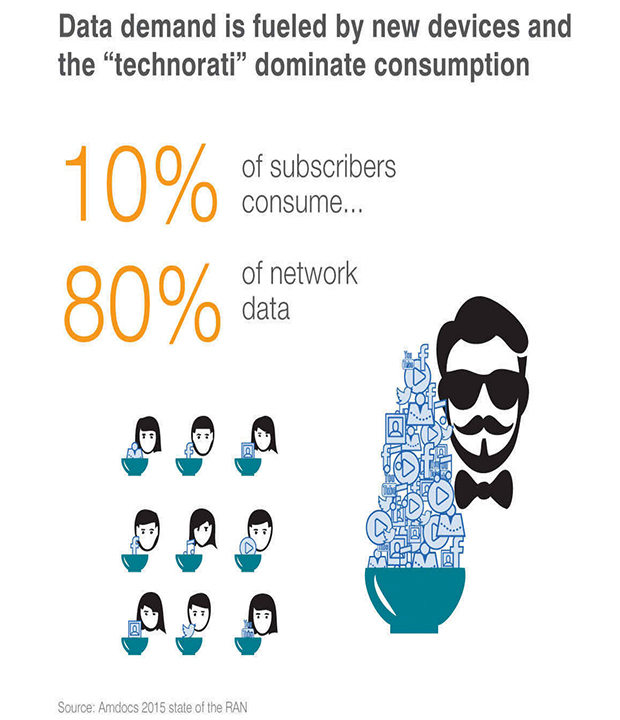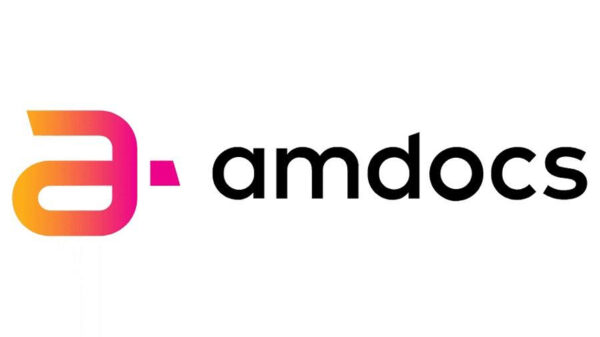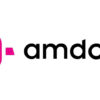Amdocs, a provider of customer experience solutions, has released new research into mobile traffic showing that the ever-increasing demand for data may exhaust the capacity of 4G/LTE network hotspots within the next two to three years.
The annual Amdocs State of the RAN research highlights the urgency for service providers to develop a “smart data” capacity strategy and prioritize investment where there is a demonstrated return on investment (ROI) and allocate capacity automatically and dynamically to maximize customer experience and profitability.In the Philippines, where smartphone penetration is expected to reach 50% this year, local mobile service providers are constantly developing their nationwide networks to accommodate a wider 4G/LTE reach. With rapidly expanding 4G/LTE networks in the country, the Philippines is poised to see more growth in its mobile consumer market and increased demand in data connectivity.This year’s Amdocs report focuses on areas with high smartphone penetration – downtown/city centers and some of the world’s major stadium events. These radio access network (RAN) “hotspots” are getting hotter as smartphone and other wireless devices proliferate and consumers take advantage of new technologies, including 4G/ LTE. The research is based on analysis of more than 25 million voice and data connections at some of the busiest network locations around the world in the past 12 months.
Key findings include:
- Hotspots continue to get hotter: The top 20 percent of locations in cities account for 80 percent of all network traffic. This intense concentration of demand will accelerate the adoption of new network technologies, including the proliferation of small cells and the introduction of carrier-grade Wi-Fi to ease the burden.
- LTE alone will not solve the problem: Per subscriber usage continues to grow; in many instances doubling over the last year. LTE is delivering increased network capacity by offloading as much as 50 percent of traffic from 3G networks but the ever-increasing demand for mobile data may exhaust this new capacity within 2-3 years.
- The RAN has the biggest impact on network customer experience: Eighty percent of dropped voice calls and more than 50 percent of data throughput issues originate in the RAN, which provides wireless mobile connection for phones and tablets and other devices, using a combination of technologies, including macro cells and small cells utilizing 3G, 4G and increasingly Wi-Fi for offload. Any improvements here will present a significant opportunity for service providers as 25- 40 percent of customer churn is network related.
- Data demand is fueled by new devices and the “technorati” dominate consumption: The majority of network data usage is being driven by only 10 percent of subscribers – the “technorati.” This segment of heavy data users consumes up to 10 times more data per session than the average user, comprising 80 percent of the overall network traffic. The ability to identify and address high-demand subscriber segments will be critical to managing scarce network capacity.
- Social media and “second screens” dominate stadium events: Sporting and entertainment events already create significant surges in mobile data demand. During the event itself social media uploads and “second screens” (watching content on a mobile device at the same time) creates a double spike, increasing data sessions by up to 50 percent. Voice calls during events drops by up to 50 percent as fans concentrate on the action.
“This research shows that service providers are facing a multi-dimensional challenge – to provide ever-increasing network capacity, greater coverage and better quality, particularly in mobile hotspots,” said Rebecca Prudhomme, vice president for product and solutions marketing at Amdocs. “The answer is no longer simply just about adding hardware – small cells and Wi-Fi will offer new options‒ but to introduce smart solutions to prioritize investment and allocate resources automatically to maximize customer experience and profitability. Through the combination of Amdocs’ vendor-agnostic RAN solutions, big data analytics and B/OSS market leadership, Amdocs enables service providers to deliver a dynamic quality of experience.”














































































































